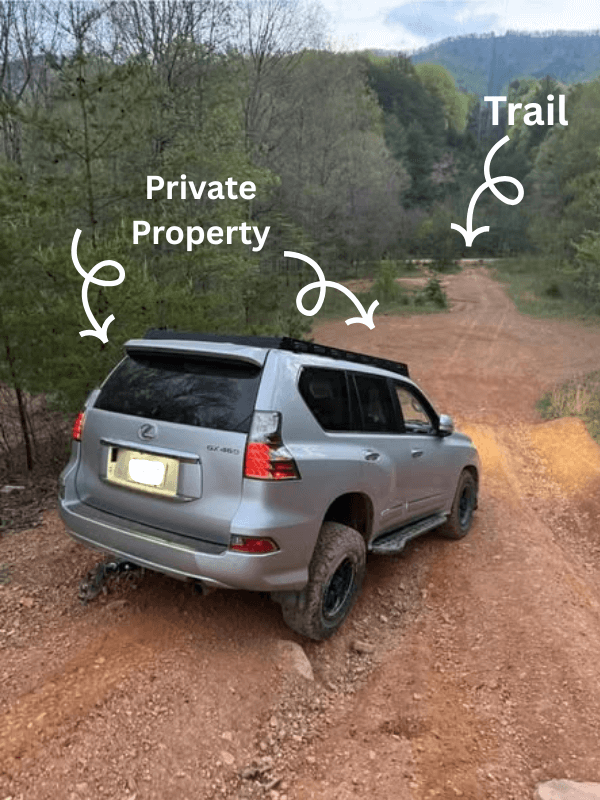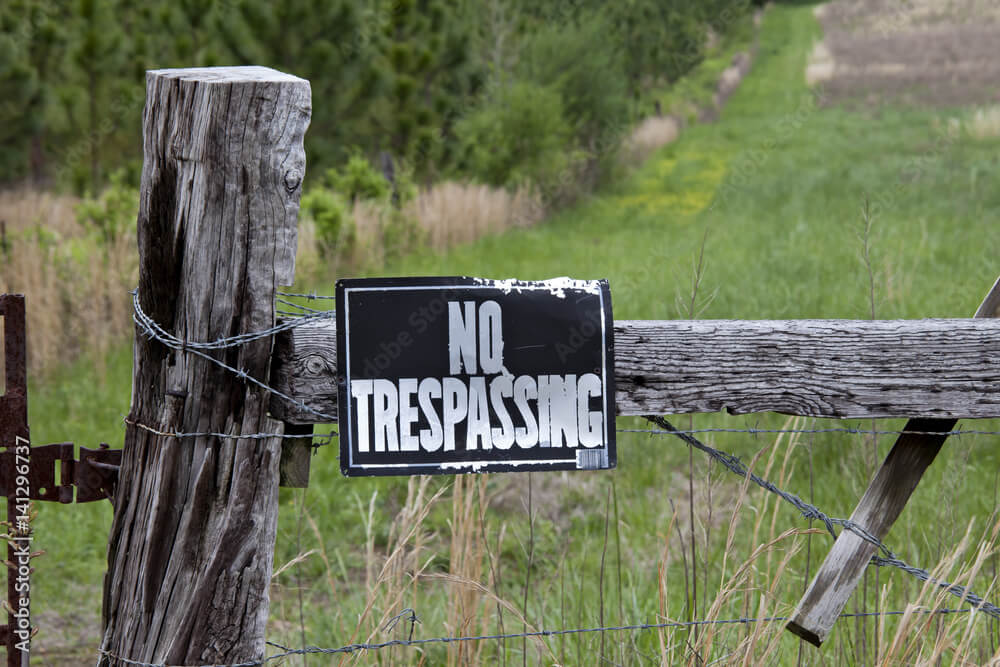🪧 Module 4: Trespassing & Land Access
Why Knowing Where You’re Allowed to Wheel Is Just as Important as How You Do It
One of the most damaging (and often unintentional) mistakes off-roaders make is driving on land they don’t have legal access to. In this module, we’re diving into trespassing, trail legality, and landowner respect—topics that matter more than ever as public and private land boundaries shift and trail closures increase.
Knowing the rules—and staying on the right side of them—isn’t just about keeping yourself out of trouble. It’s about protecting access for everyone.
🏞️ Public vs. Private: Know the Difference
Before we talk about what not to do, let’s make sure we’re clear on the two types of land:
🌲 Public Land
This includes:
National forests (like George Washington & Jefferson National Forests)
State parks
BLM land (more common out west, rare in Virginia)
Some wildlife management areas
✅ Some public land allows off-roading—but only on designated roads and trails.
❌ You cannot assume any dirt road in the woods is legal to drive.
🚫 Private Land
This includes:
Land owned by individuals, families, farms, or corporations
Timber company land (sometimes gated)
Hunting leases
Driving on private land without explicit permission is illegal and often carries fines, arrest, or even vehicle impounding.

⚠️ The Danger of “It Looks Open…”
A common scenario:
“There was no sign, no gate, and tire tracks were already there… so I figured it was okay.”
Wrong. Here’s why:
Lack of signage ≠ legal access
Tire tracks don’t mean permission—they often mean other people also trespassed
Property lines may be unmarked, but you’re still responsible for knowing them
In Virginia especially, many backwoods trails cross between public and private property lines. Just because it starts in a forest doesn’t mean it ends there.
📱 Tools to Stay Legal
You don’t have to guess. Today’s off-road navigation tools make it easier than ever to verify land access.
Use These Apps:
OnX Offroad – Clearly shows public land, trail legality, and private property lines
Gaia GPS – Excellent for trail overlays, land ownership, and offline maps
Trailforks / Avenza – Good for certain specific trail systems
Pro Tips:
Download maps before your trip—many places don’t have cell service
Cross-reference your trail with national forest motor vehicle use maps (MVUMs)
If the trail turns into an unmarked road, stop and check
📌 When in doubt, turn around.

🚔 What Happens If You Trespass?
Besides the environmental impact and risk of confrontation, trespassing has real-world consequences:
Fines and legal charges (criminal trespass is a Class 1 misdemeanor in Virginia)
Towed or impounded vehicle
Confrontation with landowners or law enforcement
Reputation damage for the entire off-road community
Worse, when enough people abuse private land, landowners take action by:
Erecting gates and fences
Installing cameras
Petitioning forest services to shut down connecting trails
That’s how access dies—one bad apple at a time.
🤝 Respect Local Landowners
Many of Virginia’s trails border or cross near farms, rural homesteads, and timber lands. Respect goes a long way.
If you’re ever in a gray area:
Look for signage: “No Trespassing,” “Private Road,” or “Posted” are hard stops
If you see a gate—don’t open it unless you’ve been invited to
If you encounter a landowner, be respectful and explain your intent to leave if unsure
Never assume you can drive across a pasture, field, or woods—even if it’s unmarked
📢 Want more trails? Respect the ones we already have.
✅ Key Takeaway: Know Before You Go
It’s not enough to hope a trail is legal. You need to know it is.
Every time someone drives onto private land, it risks:
Trail closures
Legal action
Fractured relationships with landowners
The reputation of every off-roader who comes after
By taking five minutes to research, cross-check your route, and verify access, you protect the future of off-roading in Virginia.
📌 Up Next: In Module 5, we shift gears to talk about another critical element of responsible wheeling—how to camp, cook, and enjoy the outdoors without leaving a trace. Fires, campsites, and overland practices can do damage if done wrong—let’s make sure you do it right.